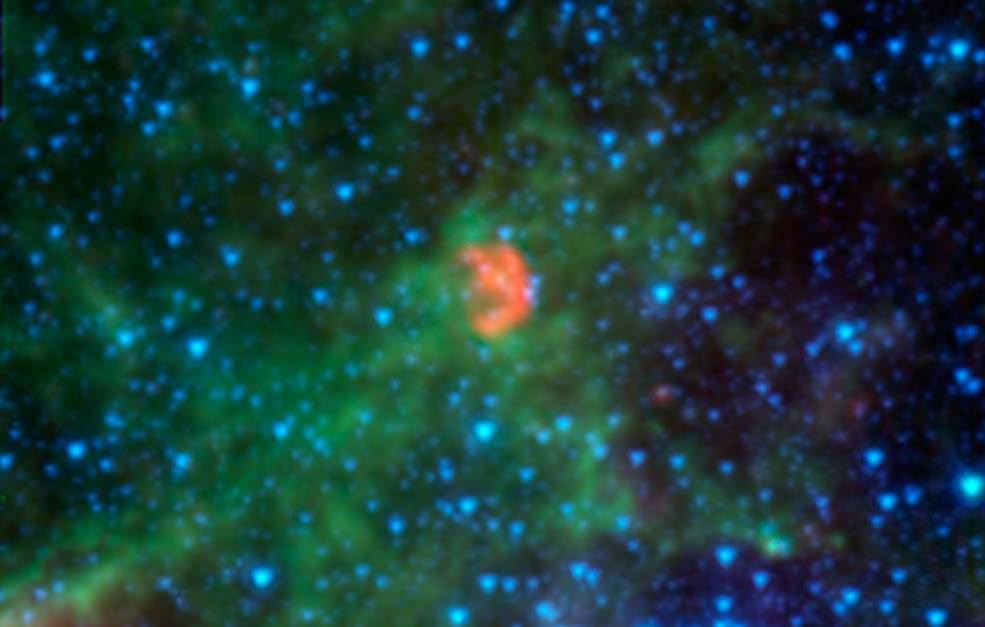It might be a bad idea to get close to dead stars. Like a White Walker from Game of Thrones, this “cosmic zombie” white dwarf star was dangerous even though it was just a corpse of a star like our own. The result from this violence is still visible in the Spitzer Space Telescope picture you see above.
Astronomers believe the giant star was shedding material (a common phenomenon in older stars), which fell on to the white dwarf star. As the gas built up on the white dwarf over time, the mass became unstable and the dwarf exploded. What’s left is still lying in a pool of gas about 160,000 light-years away from us.
“It’s kind of like being a detective,” stated Brian Williams of NASA’s Goddard Space Flight Center, who led the research. “We look for clues in the remains to try to figure out what happened, even though we weren’t there to see it.”
This explosion in the Large Magellanic Cloud — one of the closest satellite galaxies to Earth — is known as a Type 1a supernova, but it’s a rare breed of that kind. Type 1as are best known as “standard candles” because their explosions have a consistent luminosity. Knowing how luminous the supernova type is allows astronomers to estimate distance based on its apparent brightness; the fainter the supernova is, the further away it is.
Most Type 1as happen when two orbiting white dwarfs smash into each other, but this scenario is more akin to something that Earthlings saw in 1604. Informally called Kepler’s supernova, because it was discovered by astronomer Johannes Kepler, astronomers believe this arose from a red giant and white dwarf interaction. The evidence left for this conclusion showed the supernova leftovers embedded in dust and gas.
Investigators have submitted their results to the Astrophysical Journal.
Source: NASA Jet Propulsion Laboratory


Now that’s one title that is sure to get people to pay some attention to science. Nice going!